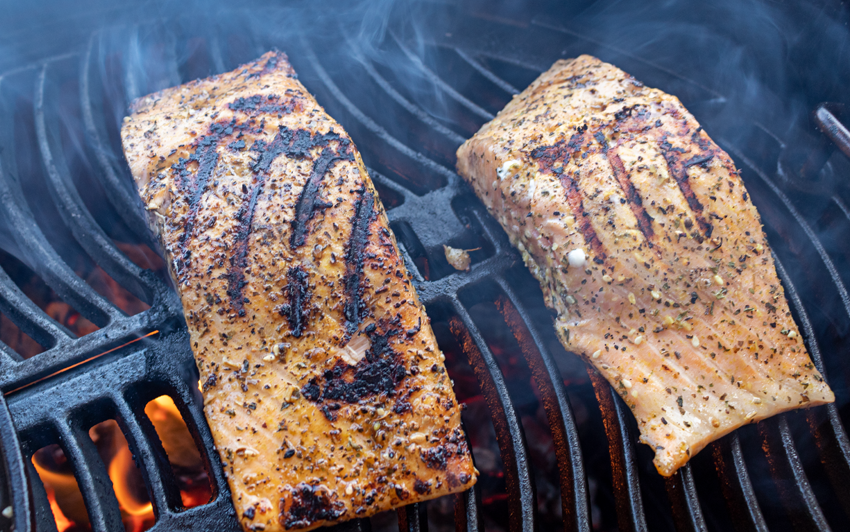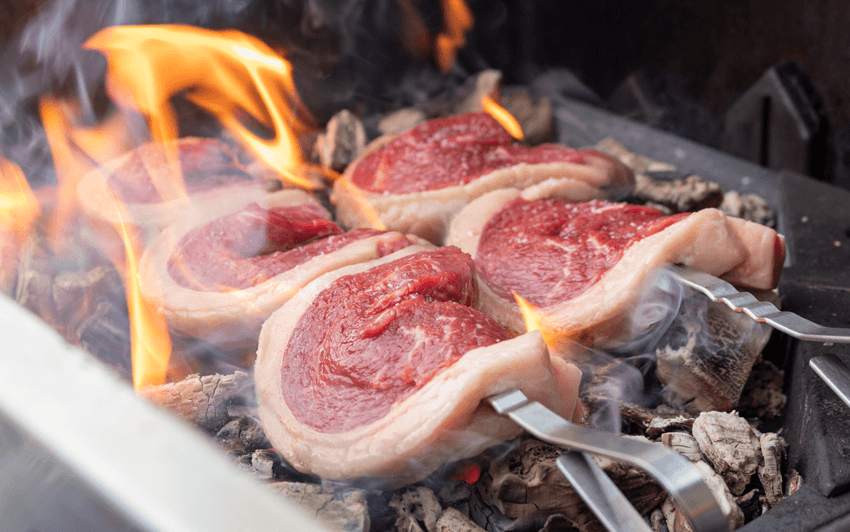
The Science of BBQ - How Cooking Happens on the BBQ
The science of barbecue explores the way cooking happens and why as you use different grilling techniques to achieve delicious meals. Some important things that happen when using your barbecue to cook food include the Maillard Reaction – browning, Caramelization of sugars and rendering of fat to create juicy meals. But how do these things happen? Explore how thermodynamics – the understanding of heat energy – creates the perfect conditions to cook your meals.
What is Thermodynamics?
Thermodynamics is the understanding of how heat moves from one place to another. This very much applies to using your barbecue to cook. Light energy from fire creates radiation (the good kind, not the Hulk kind) and that radiant energy is expressed through heat. This heat, used to cook, comes directly from flame, is transferred to the cooking grids or other accessories, and even found in the air inside the barbecue. These elements are what causes cooking to occur.
Learn more about Thermodynamics in our article about Carryover Cooking.
How does Cooking Happen?
There are several ways that cooking can occur. Each of them are ideal for achieving different results. Much like searing a brisket wouldn't result in a smoky and tender piece of meat, it’s the knowledge of how these kinds of cooking work that ensure your meal turns out the way you want it.
Radiation
Like mentioned above this isn’t the Hulk kind of radiation, but heat generated by light energy. Fire - gas, wood and charcoal - are forms of the same radiant energy. Lit charcoal produces loads of infrared radiation. This radiation is converted to heat when it hits your food, much like the light from the sun feels warm on our skin. Our infrared sear station side burner is another prime example of this type of energy in use. The fuel you are using in your grill is pushed through tiny pores in the ceramic brick of the side burner. When that gas is ignited it burns and heats the ceramic until it glows with heat. When food is placed next to fire, lit charcoal or the infrared sear station the heat is hitting the food directly. Charcoal and our infrared sear station burners are ideal examples of radiant heat for cooking.
Now. I can hear you from here. “But wait! There are sear plates, cooking grids, and other things between the food and the radiant heat source when you barbecue. You are correct! There are generally barriers between your food and an unobstructed avenue to this delightful radiant heat for cooking. Especially if you are using accessories, like the PRO Stainless Steel Topper.
Conduction
Conduction will be the most familiar form of how cooking happens. The heat energy is transmitted through direct contact. Cooking grids, sear plates, pans and other accessories are heated through the radiation of the burning fuel (gas or charcoal). That heat is then given to the food through those grids and pans in a delicious game of hot-potato thanks to the second law of thermodynamics that states everything wants to be the same temperature, so the grids will give that food their heat resulting in a savory meal and spectacular sear marks.
Ultimate Brined Pork Chop Recipe
Convection
Yes, like the oven! Convection is when heat is given to the food you are cooking through the air. This heat can also be transferred through water and even oil as well. The air in your barbecue is hot and circulates around the food you are cooking. (As long as you leave that lid down.) While one side of your meat is getting sear marks from the cooking grids the hot air will cook the outside of the meat from the top and sides. However, convection only cooks the outside. The interior of the food cooked through convection is actually being cooked through conduction because the heat energy of the outside of the food has to travel from the surface to the interior. This also happens when using indirect heat to slowly cook food, as well as smoking. Convection uses the natural airflow in the barbecue or smoker to create convective cooking. You can also achieve cooking through convection when you use the rotisserie, deep fry, cook sous vide and boil. These two recipes are great examples of convection cooking on your barbecue.
Cooking is fun and can seem like magic when you get spectacular results. What is your favorite mode of cooking? What are your favorite recipes? Share your thoughts, recipes and photos on our social pages like Facebook and Instagram using the hashtags #NapoleonMoments and #NapoleonEats.




